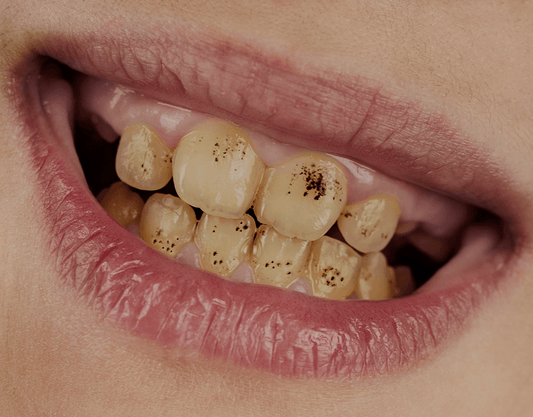If you’re currently wearing orthodontic appliances or have recently had them removed, you may wonder, can braces cause stains and how to remove them? The truth is, braces themselves don’t stain teeth, but they can create conditions where stains are more likely to develop. This happens because brackets, wires, and bands make it harder to clean certain areas, allowing plaque, tartar, and food pigments to accumulate. Over time, this can lead to visible discoloration or white spots. The good news is, there are effective ways to prevent and treat these stains so your smile looks its best once your orthodontic treatment is complete.
What is treatment and how it works?
Dental Stain Removal in Dubai after braces involves targeted cleaning techniques to eliminate discoloration caused by plaque, tartar, or pigment buildup around brackets. The process may include:
- Professional scaling and polishing to remove hardened deposits.
- Air polishing with fine powders to lift surface stains.
- Teeth whitening treatments to even out tooth shade after discoloration.
This works by physically removing stains on the enamel surface or lightening the tooth color to match surrounding areas. In some cases, microabrasion or composite bonding can be used to address stubborn marks.
Importance of treatment:
Treating stains after braces is not just about appearance—it also supports oral health:
- Boosts confidence by improving tooth color and uniformity.
- Reduces plaque buildup by smoothing enamel.
- Prevents long-term discoloration from becoming permanent.
- Restores natural tooth brightness for a complete orthodontic transformation.
Leaving stains untreated may cause them to become harder to remove over time, and they can also be a sign of enamel demineralization that needs attention.
Types of treatment for braces-related stains:
Surface stain removal
- Scaling and polishing for plaque-related discoloration.
- Airflow polishing for mild to moderate pigment stains.
Whitening-based stain removal
- In-office bleaching for generalized yellowing after braces.
- Take-home whitening trays for gradual improvement.
Advanced correction methods
- Enamel microabrasion for white spot lesions.
- Composite bonding for stubborn discoloration areas.
Preparation before stain removal:
Before beginning treatment for braces-related stains, it’s helpful to:
- Wait until orthodontic treatment is complete to assess overall tooth shade.
- Brush and floss thoroughly to remove loose plaque.
- Discuss tooth sensitivity with your provider for customized care.
- Avoid heavy staining foods and drinks before your appointment.
Good preparation helps the treatment work more effectively and ensures even results.
Aftercare for long-lasting results:
Maintaining your smile after stain removal from braces requires consistent habits:
- Brush with a fluoride toothpaste twice daily.
- Floss or use interdental brushes to reach tight spaces.
- Limit coffee, tea, red wine, and deeply colored foods.
- Schedule regular professional cleanings to prevent new discoloration.
- Use a straw for stain-causing beverages.
This routine will help extend the brightness and prevent new marks from appearing.
Ideal candidate for braces stain removal:
You may benefit from stain removal if you:
- Recently had braces removed and notice discoloration.
- Have healthy gums and enamel.
- Can commit to good aftercare habits.
- Want a uniform, brighter smile post-orthodontics.
Those with significant enamel damage or deep intrinsic stains may need a combination of treatments for best results.
How to choose a right clinic?
Choosing the right place for removing stains after braces involves:
- Looking for a clinic experienced in post-orthodontic cosmetic treatments.
- Asking if they offer both mechanical cleaning and whitening options.
- Ensuring they provide a stain-prevention plan tailored to your needs.
- Checking before-and-after examples of similar cases.
Risks:
While generally safe, braces stain removal may involve:
- Temporary sensitivity to hot or cold.
- Mild gum irritation.
- Possible need for multiple sessions for stubborn discoloration.
- Enamel wear if abrasive methods are overused.
Benefits:
The advantages of Dental Stain Removal include:
- A noticeably brighter, more uniform smile.
- Restored enamel smoothness and shine.
- Improved oral hygiene post-orthodontics.
- Confidence boost after your braces journey.
Frequently asked questions:
Do braces always cause stains?
Not always, but poor cleaning habits during orthodontic treatment increase the risk.
Can I prevent stains while wearing braces?
Yes—brush after meals, floss daily, and limit highly pigmented foods.
Will whitening alone remove braces stains?
It can help, but surface cleaning may be necessary first.
Are white spots after braces permanent?
Some improve with remineralization or microabrasion, while others may need cosmetic treatment.
How soon after braces can I get stain removal?
Usually right after removal, unless additional orthodontic adjustments are planned.
Conclusion:
So, can braces cause stains and how to remove them? Braces don’t directly discolor teeth, but they can make it easier for plaque and pigments to cause staining. Once your orthodontic treatment is complete, targeted stain removal methods—ranging from polishing to whitening—can restore your smile’s brightness. With the right preparation, aftercare, and professional guidance, you can enjoy teeth that look as good as they feel. Knowing can braces cause stains and how to remove them empowers you to protect your teeth during and after braces, ensuring that the final reveal is as beautiful as you envisioned.

